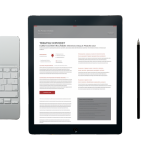What is Open Pricing?
Open Pricing provides you with the ability to yield room types based on demand. It’s a further evolution from the traditional best available rate (BAR) strategy, which was formulated in the 1990s and was seen as an evolution of seasonal rates.
All prices in a BAR concept are fixed modifiers off each other, either at a dollar mark or as a percentage discount. For example, if your BAR rate is $200 dollars on a particular night and your fixed modifier is 10%, you can only sell that rate at $180, or shut it off with an availability restriction.
With an Open Pricing strategy, you can yield each segment, channel, and room type independently. It enables you to have as many incremental price points on a demand curve as you want, regardless of the BAR price. So, now you can charge $185, $186, $187, or even $216. It also allows you to be open and selling even during peak periods.

7 steps to begin Open Pricing
Fortunately, rethinking your pricing approach and taking the first steps to a more a profitable Open Pricing strategy doesn’t require significant investment. While it may take time to lay the groundwork for your new strategy and get the key pieces and personnel in place, the basics of Open Pricing can be implemented manually.
1. Collaboration across departments
First, understand that an Open Pricing strategy requires a holistic approach that includes collaboration from several other key departments, starting with sales and marketing. Beyond the Director of Revenue and VP of Sales and Marketing, entire teams must work hand-in-hand to ensure larger strategies, specific promotions, and inventory discounts are implemented most effectively.
Once implemented, you’ll have a much more optimal and profitable pricing strategy in place. You’ll no longer need to constantly close and reopen different booking channels and lose customers to your competitors. Your pricing strategy will also be better coordinated with the marketing initiatives of running or deploying promotions.
2. Revisit your discount policy
An easy place to start is by discussing corporate accounts that don’t require last room availability (LRA) and fixed discount values, which allows their pricing to be more dynamic.
Instead of offering corporate accounts seasonal rates, such as guaranteeing 15% off BAR every day, offer up to 20% discount off your fully flexible rate. This means in times of low demand you might offer a 20% discount to the group, but on compressed dates you can reduce that discount down to 5% or even 0%.
Hotels can slowly implement this strategy over time, and it’s essential that you work with sales and marketing during the RFP season to do so.
3. Adjust your marketing messages
You should take steps to change your overall marketing message, specifically the “Stay x nights and receive one free” strategy. While this is a popular approach, it limits the ability to flex that discount based on demand.
Instead, adapt your marketing message to say, “Stay longer (four nights or more) and save up to 25%.” Keeping that discount flexible allows you to keep the offer open even in times of constrained demand. You simply reduce the discount.
4. Train your staff
Perhaps the biggest adjustment to your strategy when moving to Open Pricing will be training the entire staff to move away from a BAR approach. Simply put, eliminating BAR pricing will allow you to set your daily rate more dynamically and to flex your discounts — offering bigger discounts in times of need and fewer discounts on constrained dates — which will inevitably lead to more revenue and profit.
5. Start pricing by demand
Instead of using fixed modifiers to differentiate prices between your rooms with double beds and rooms with king beds, price those different room types based on demand.
When business travelers are in for a popular convention, you could end up charging $100 or $200 more instead of $50 more for king rooms. Inversely, on the weekends when you’re hosting mostly families, price the high-demand double rooms at a premium.
6. Consider guest lifetime value
The future of hotel pricing is a personalized approach where rates are based on a customer’s lifetime value. You can begin implementing some of those first steps now by requiring your guests to login to your website, perhaps your loyalty program, so you can offer them “fenced” rates without breaking parity agreements. By offering your loyal customers personalized, discounted offerings, you can increase guest loyalty, improve customer satisfaction, and drive more profitable direct bookings.
7. Keep your channels open
An important step in an Open Pricing strategy is understanding how to keep promotions and channels available without closing them off as demand increases.
For example, if you’re nearing a compressed weekend and rooms are filling quickly at the best publicly available rate, it’s a common strategy to close discounted channels and only accept bookings from your higher-rated channels. As you near capacity, operators often stop honoring the AAA rate, which is typically 10% off, and close discounted OTA sites hoping to fill those last few rooms at the full rate. Instead of closing the AAA channel, it could be yielded down, even to 1% less than BAR, to make sure customers aren’t turned away.
The same principle applies to OTAs. While you might typically offer deep discounts to sites that will package your hotel rooms with airfare or car rental, Open Pricing allows you to slide those discounts up and down independently based on supply and demand. Perhaps you choose not to offer package discounts at all, but rather than close the channel, your hotel remains available on the distribution site at your regular rate.
Use a revenue management system to automate the process
The more frequently you can change your rates based on supply and demand, the more revenue you can capture. It’s imperative to have as many different rates and price points available as possible, and have your hotel available for booking on all channels where consumers may be shopping.
While many of these strategies can be implemented manually, they require a significant amount of time. Many hoteliers use a matrix in Excel to track prices and inventory for all the various distribution channels, including rates sent to the PMS, the CRS, a channel manager, and any applicable extranets. Investing in new technology and cloud-based systems can help simplify the process. The right revenue management system (RMS), like Duetto, seamlessly interfacing with your CRS and PMS, can automate all of these tasks and significantly reduce the time spent doing manual calculations and data entry.
Your complex and manual pricing matrix can become a simple, user-friendly calendar with suggested rates calculated by an algorithm that takes numerous data sets and all of the above strategies into consideration.
For example, no need to run historical pace reports by segment to see how those business travelers booked last year’s convention. The system does the work for you, yielding king rates up, and will prompt you to accept or override the suggested rate. Yielding offers and room types manually can be more than a full-time job. So, technology should take care of that part. Plus, it’s normally not only more efficient, but also more accurate.
Because the system is automating all the necessary calculations, you can shift your focus to a more strategic role, moving away from keystroking and instead finding more time to analyze forecasts and pick up, as well as easily sharing reports with other departments that affect revenue.
Another crucial feature is alert functionality, which notifies you to any sudden changes in demand that might require a rate adjustment, either up or down.
This alone eliminates most of your report running, notifying you in advance where your revenue opportunities are. For example, you’ll be alerted when business on the books increases or when their competitors raise or lower their rates. This allows you to react quicker to dynamic market conditions and adjust prices to maximize revenue.
Open Pricing is easy to manage with an integrated tech stack
Adopting an Open Pricing strategy enables you to price each and every room with a unique price to maximize net revenue. The permutations are endless, as you can price room types, channels, and dates independently, 365 days a year. This enables you to find the right price, for the right room, for the right customer, at the right time.








